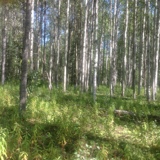Information
-
Document No.
-
Area
-
Tenure Holder
-
Conducted on
-
Prepared by
-
Location
-
Personnel
Observations
-
-
Select date
-
www.cbc.ca -
- another test
-
Channel structure, function, and diversity
-
Channel characteristics (rocks, large woody debris) and associated floodplains (access to overflow areas) are adequate to display energy.
-
Lateral movement is associated with natural sinuosity.
-
Erosion, deposition, embeddedness, and movement of bed materials are normal for this reach.
-
Aspects of channel geometry are in balance with the landscape position.
-
Inputs of large organic debris and incorporation into the channel are normal for the area.
-
Banks are undercut (meandering or riffle-pool streams)
-
Boulders in streams are moss-covered (step-pool streams).
-
Riffle-bed materials and gravels are free of sediment. Fish spawning and use of rock undersides by insects and other invertebrates are possible.
Biotic Community
-
Roots of trees shrubs and graminoids extend into the stream. Roots masses are capable of withstanding high stream flow events and allowing formation of overhanging banks.
-
There is recruitment of riparian tree and shrub species that will contribute to replacement woody debris in the foreseeable future.
-
Riparian habitat and structure have been maintained.
Hydrology/Soils
-
Riparian soil moisture characteristics are maintained.
-
Bank shearing, soil compaction, and bare ground are uncommon.
Nutrient Inputs and Water Quality
-
Vertebrate and invertebrate life indicate good water quality.
-
Nutrient inputs are normal (there is a lack of algae mats).
-
Inputs of fine organic matter from the detritus food chain are appropriate.
Notes
-
Is the desired plant community present (diversity, species, age, structure, form)?
-
Does the substrate make the stream susceptible to either vertical or lateral erosion?
-
Are the riparian soils subjected to prolonged saturation and anaerobic conditions?
-
Is the stream beaver influenced or controlled?
-
Are there outside factors affecting the dynamics of the system
Beyond tenure holder control
-
Land uses beyond the control of the holder
- Dams
- culverts
- channelized
- Land Clearing
- Recreation
- roads/logging
-
Land uses under the control of the holder
- clearing
- dam
- draining
- fire
- grazing
- mowing
- structures
- seeding
-
Photo
Plant community
Grass/Forb
-
-
Second grass or Forb
-
Third grass or Forb
-






